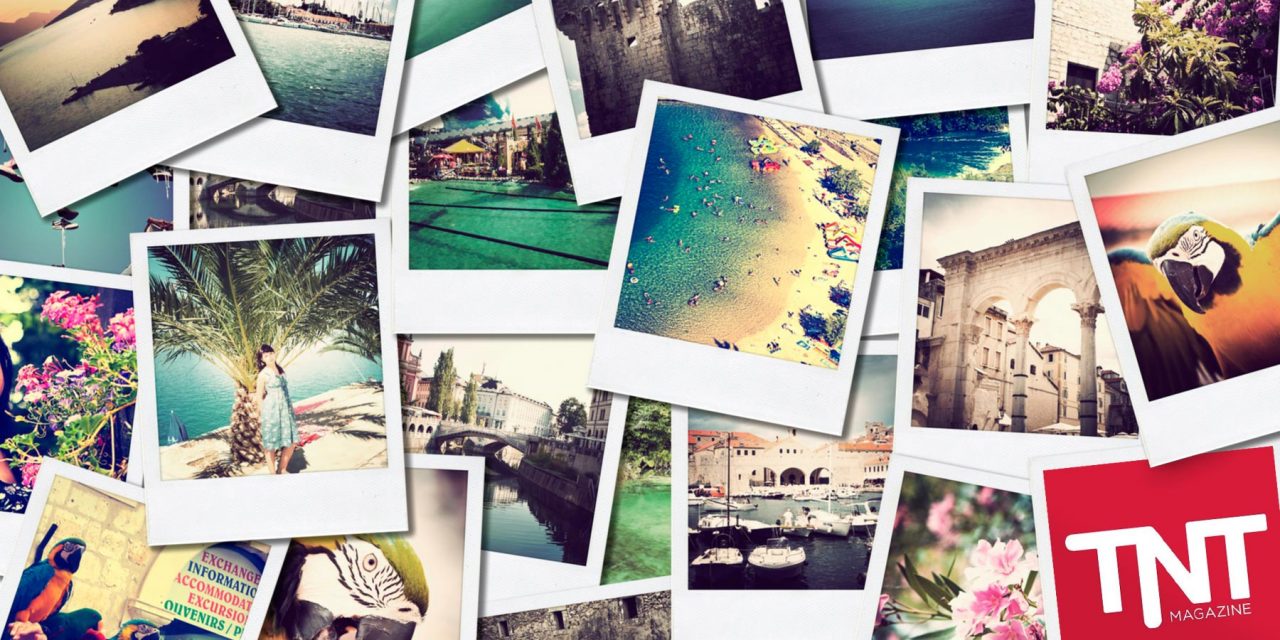First things first, forget about London, Paris or New York. If you’re craving an all-out attack on your senses, there’s one city above all others that keeps the blows coming, 24/7, leaving you dazed, dazzled and desperate for more; that’s Tokyo. Put simply, the Japanese capital is as exciting, surreal and downright mental as it gets.
I’m at the end of my week in the world’s biggest metropolitan area, thanks to an extended stop-off between Europe and Australia, and I’m still not entirely sure what’s hit me. I’ve not taken any drugs, and barely touched a drop of alcohol, but feel like I’ve entered an extended state of hallucinogenic glee, my visions flitting from computer game graphics to samurai movie traditions.
That’s not to say, however, that Tokyo doesn’t do the usual city things well. Indeed, the capital, which, until as recently as 1867 was known by its original fishing village name, Edo, has a habit of finishing at the top of lists. For example, which city has the most Michelin-starred restaurants in the world (with double as many as second placed Paris)? Tokyo. Which city is home to more Fortune 500 companies than anywhere else? Tokyo. And where have Guardian readers voted as the best city in the world to visit, three years running? That’ll be Tokyo. The lists go on.
Of course there’s one other league that Tokyo is famous, or infamous, for regularly topping, and that’s the one ranking the world’s most expensive cities. And it’s true, prices are high. But don’t be put off – it’s not as bad as you might fear, especially if you’ve been coping with Sydney or Melbourne prices. Most of the costs that seem excessive by international standards tend to hit the locals, for example utility bills and cars. Travellers, by comparison, don’t fare too badly, thanks to plenty of not extortionate options when it comes to food, accommodation and getting around. Plus best of all, Tokyo is not a city where you tick off a list of must-sees (and hefty entrance fees), but a place to wander around, gawp in awe and generally succumb to the jetlag-infused confusion. So here’s our guide to making the most of the madness.
Sliding doors
Sure, there’s no shortage of the usual you-could-be-anywhere-in-the-world hostels, but it’s worth throwing yourself in at the deep end, paying a little more (at least for a night or two) and heading to a ryokan, one of the traditional inns which travellers have for centuries been using to rest their weary heads across Japan. Prepare for sliding paper doors, futons on the floor, ditching shoes for slippers and old-style Japanese breakfasts served on tiny tables in your room. Be warned though, if you’re heading to the communal baths in your Japanese robe (like the obliging tourist you are), try and avoid the large group of pissed-up local teenagers also staying there – because they will laugh at you, very loudly. While pointing (trust me).
Looney tuna
Okay, so I said that Tokyo isn’t a city for ticking off sites. Well, that’s true, but it’s always handy to have a few focal points to keep an eye on so that you don’t spend your entire time getting lost. As it happens, jetlag makes the decision for me. Finding myself with predawn hours to fill, I make my way to the Tsukiji Fish Market, the world’s biggest and busiest market of its kind, where over 2,000 tonnes of seafood are sold every day. It’s supposed to be moving to a new site in 2014, with the city authorities gagging to cash in on the vast area of inner-city real estate, so I’m keen to catch it before it heads out of town. Arriving at 4am, I’m in time to sign up for the daily tuna auctions, which kick off just after 5am, with viewing access limited to just 120 tourists a day. The auction itself is an eye-opening experience, especially considering the sleep-deprived, frazzled look of those around me. Stood in a huge warehouse, before us lie row after row of giant blue fin tunas, frozen in formation like an armoury of torpedoes being prepared for war. The bells clang and the auctioneer’s garbled shouting gets underway, interrupted now and then by the nod and a wink of a buyer, followed by the quick exchange of tens of thousands of dollars, before the process is repeated again for the next batch of prized sashimi-in-waiting.
After an hour or so of the selling, I wander off into the giant maze of 1,000-plus stalls that make up the market, every now and then jumping sideways to avoid a high-speed forklift, or stopping, boggle-eyed, for a closer look at some of the sea monsters on display. Eventually, I find my way to the restaurant area, eager to sample some of the goods for breakfast. Needless to say, I doubt I’ll ever enjoy better sushi.
High in the sky
Scrambling into daylight, accompanied by a new aroma unlikely to gain me many friends, I make my way back to the subway, aware that my next jetlag slump is threatening to descend at any moment. Luckily, I arrive at the Tokyo Skytree before the daze takes control. Standing 634m high, the Skytree is the world’s tallest broadcasting tower and boasts an observation deck looking out over the Kanto area towards Mt Fuji in the distance. It’s the perfect place to appreciate the scale of the region and its 35 million people, while being confident that none of them are likely to interrupt my much-needed power-nap.
Feeling suitably refreshed I head back onto the streets to do what I seem to spend the best part of my week doing – wandering aimlessly amongst Tokyo’s central suburbs such as Ginza, Shibuya and Omotesando. The city feels on a scale unlike any other metropolis. In fact, there is no obvious centre. Instead there are numerous districts, all with a maze of streets packed with design-obsessed urbanites surrounded by skyscrapers rising up in a flurry of neon and massive TV screens. There’s a surprising lack of old buildings, surprising that is until you realise the city has been almost totally rebuilt twice in the last century – once after a massive earthquake in 1923, and then after extensive World War II bombing in 1945. Luckily, the earthquake and nuclear crisis suffered by Japan in 2011 left the capital largely unscathed.
Alien encounters
Exiting each subway station can feel like entering an entirely different world and, to my western eyes at least, everything is alien. From the fashions on the street to the toys in the shops and even the Coke cans, the smallest things are subtly different and undeniably Japanese. It’s a place where the everyday mundanities, from crossing the road to going to the toilet (no, really), become bizarre, warped experiences.
Indeed, Tokyo’s tourist board claims the Shibuya intersection is the world’s most famous road crossing, which seems like one desperately lame boast until you’ve plodded across it yourself. There you wait, amongst the many hundreds of pedestrians at the giant crossroads, wondering if the lights will ever change, when suddenly the carnage descends and the army charges at you from every side, all while cartoons play out on the side of buildings and music and lights assault you from each direction. It’s like Times Square on steroids. And the toilets? Well, clearly aware that most locals are deeply uncomfortable with sharing the audible results of their straining and splashing, many of Tokyo’s public toilets come complete with a hi-tech interactive menu, letting you mask your deadly deeds with all manner of sounds, smells and sprays.
Neon nights
After dark I regularly find myself exploring the streets of precincts like Shinjuku. Tokyo comes alive at night like no other city, with its love for neon transforming whole areas into massive corridors of light reaching all the way up the skyscrapers. It feels like I’m in a cheery Blade Runner.
Every now and then I brace myself and take on the challenge of eating, at which I have wildly varying results when brave enough to branch out from sushi and tempura. The one constant seems to be that I must detach my eyes and brain from my taste buds. You see, despite being a huge fan of Japanese food, once in Japan, it’s not all that simple. Indeed, with written or spoken English a rarity in Tokyo, ordering is often a case of blindly selecting something and crossing your fingers. What I’m brought, more often than not, is a selection of slimy morsels I can’t quite put a name to. The house special they might be, but that doesn’t help with the gagging reflex.
By chance my final day in the city is a Sunday, meaning I get to catch a particular Tokyo oddity I’ve been eager to see – the Harajuku cos-play kids. After all, if there’s one thing Tokyo is obsessed with above all else, it’s style, and, like most things in Japan, there’s always someone willing to take it to quite an unexpected extreme. In this case it’s the world’s oddest teenagers. Every Sunday they get dressed up in their cos-play outfits, whether it’s a corpse bride gown or a dinosaur suit and head to Harajuku where they try to outdo each other and pose for tourists. It has to be seen to be believed and is Tokyo at it’s most surreal. Which is why, heading to the airport after a week of sensory overload exploring Japan’s capital, I still feel as disorientated as the moment I arrived.
When to go: Tokyo is great at any time of year, but bear in mind that summer (June to August) is busiest. June to July can be very wet while August is incredibly hot. Arguably best are the cooler autumn months (September to November)
Getting around: The city has an excellent and easy-to-use subway system. A one-day ticket costs AUD$7. From Narita International Airport, the 60km train journey into Tokyo costs about AUD$30
Currency: AUD$1 = 98.1 Japanese Yen (JPY)
Stay: Dorm beds at Anne Hostel Tokyo (j-hostel.com) cost from AUD$26.50 a night, including breakfast. A good option for a traditional ryokan is Homeikan (homeikan.com), where a twin room, including breakfast, costs AUD$110.
See: gotokyo.org












